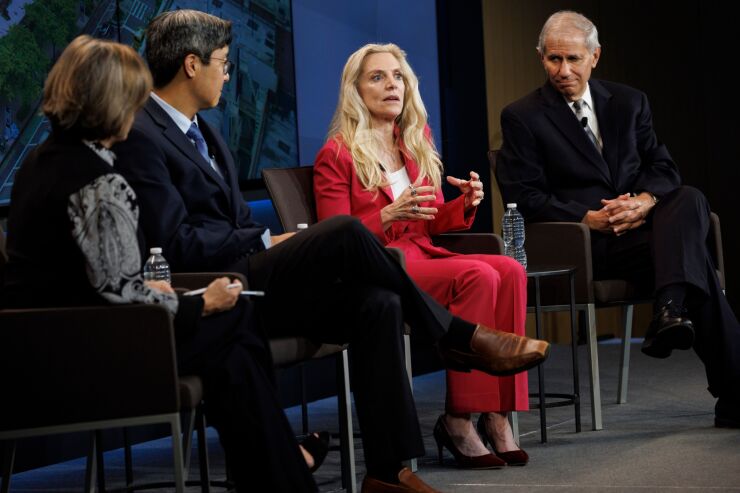Proposed changes to the Community Reinvestment Act could create “powerful incentives” for banks to invest in Native American communities, Federal Reserve Vice Chair Lael Brainard said Tuesday afternoon.
During a webinar with a dozen Native organizations, Brainard, acting director of the Federal Deposit Insurance Corp. Martin Gruenberg and acting Comptroller of the Currency Michael Hsu outlined the potential benefits of the CRA overhaul
Expansion of online banking and the ability for banks to reach customers well beyond the bounds of their local branches has driven the current reform effort, the first reform effort mounted by the three agencies in more than two decades. Brainard said this shift could be used to funnel investments to broader areas, too.

“This is a once-in-a-generation opportunity to strengthen the CRA to bring greater credit, investment, and banking services to the communities that have faced the greatest challenges,” she said. “For the first time, the CRA will provide powerful incentives for banks to make investments in communities that do not have access to branches, such as in Native lands.”
The joint proposal aims to modernize the CRA to allow for banks to be more easily credited for community investment activity done outside the immediate “facility-based assessment areas” surrounding their branches. Certain activities, such as investing in affordable housing, can be counted regardless of where it is in the country. The proposal also enables more activities to garner CRA credit, including investments in childcare, education, workforce development, job training and health services, as well as efforts to improve financial literacy.
First signed into law in 1977 to counteract discriminatory redlining practices that kept many minorities from accessing credit, the CRA has been criticized for doing little to close racial wealth and homeownership gaps.
Many Native communities have been cut off from mainstream banking and financial services. In her speech, Brainard cited FDIC findings that 16% of Native Americans did not have a bank account, triple the rate of the broader population. Majority-Native counties are home to just two bank branches, on average, compared to the national average of 26, according to FDIC data. As a result, Native-majority census tracts see roughly a quarter of the CRA small business and small farm lending, on a per capita basis, as white-majority areas. This disconnect has caused some communities and tribes to
Persistent racial disparities have caused some advocate groups to call for the CRA to adopt
The current proposal from the Fed, FDIC and OCC does not go quite that far, though it does call for banks to disclose statistics about the racial and ethnic backgrounds of its borrowers and has special provisions for institutions focused on serving minority communities. Other provisions focus on areas with low levels of community development and persistent poverty, both of which apply to many Native lands.
Hsu — who last September
“This is something we’ve been very, very engaged on,” Hsu said. “To echo something Lael said, this represents a once-in-a-generation opportunity to do more.”
Gruenberg reiterated his stance that he wants to use the CRA reform as an opportunity to strengthen performance standards, noting that the bar would be raised for both the retail lending test and the community development test for banks.
He added that revamping the act provided an opportunity for regulators to encourage investment in areas that have historically been looked over.
“The purpose here is to expand the scope of CRA to make it more effective in serving all [low- and moderate- income] communities and we know that Native American communities have particular challenges in terms of access to basic banking services and to provide incentives for the banks to do more,” he said. “That’s our objective.”
The notice of proposed rulemaking from the three agencies will be open to public comment until Aug. 5.







